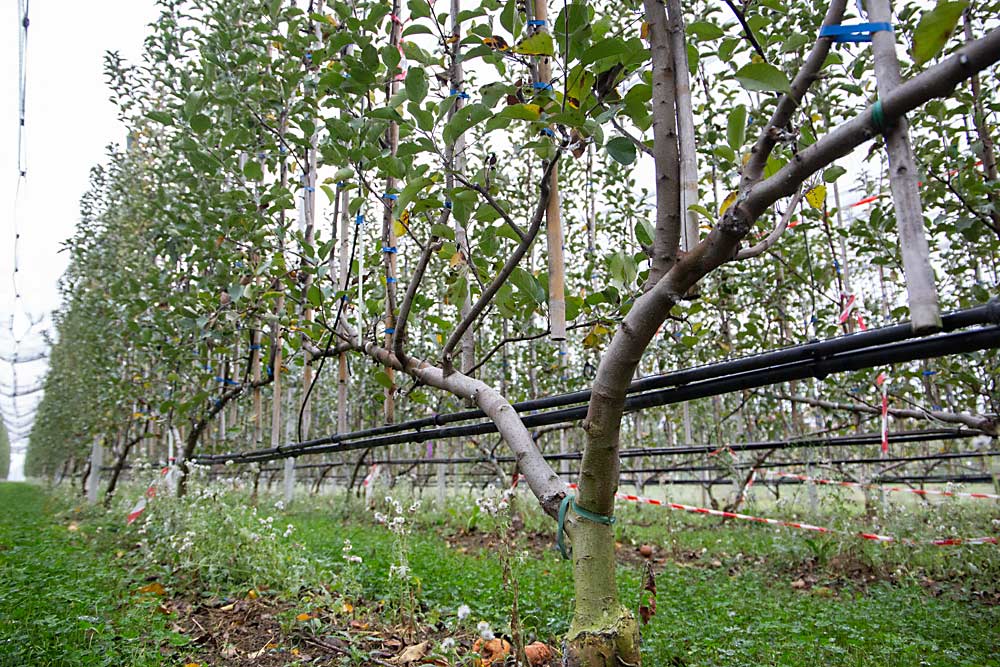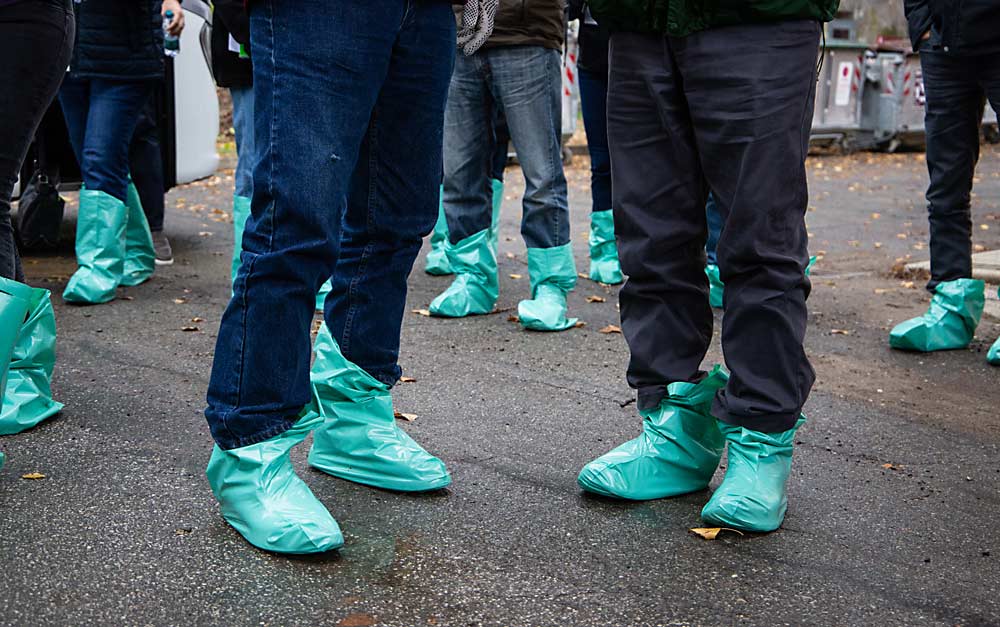
A tour of research trials at the world’s oldest university Nov. 13 and a visit to a massive agricultural equipment trade show Nov. 12 kicked off the International Fruit Tree Association’s tour of Northern Italy.
Researchers showed off planar cordon training systems for peaches, plums and apples at the agricultural school of the University of Bologna, the world’s first university.
Founded in 1088, according to some estimates, the university still anchors the city, though the agricultural school has moved to the suburbs near the community of Cadriano. It boasts 300 hectares of research farm with wheat, potatoes, tomatoes and tree fruit.
One of the apple plots took two-dimensional to the extreme, with two-leader (or bi-axis, as it’s called in Italy) trees trained into horizonal leaders with upright fruiting wood 30 centimeters apart, and trees taller than the alley is wide, all under hail netting.
“We are really pushing this training system,” said Luigi Manfrini, a horticultural researcher.

The other apple trial, a shade netting trial, uses 50 percent less water to produce the same, if not better, yield and quality as the uncovered control, said research leader Luca Corelli Grappadelli.
Both trials are sprayed, fertilized, irrigated, cooled and protected from frost through a solid set canopy system.
Corelli Grappadelli, a horticulturist, and a team of engineers are working to commercialize an autonomous, electric robot that uses GPS, cameras and lidar to navigate.
That tractor was on display at EIMA, a trade show of agriculture, construction and forestry equipment in Bologna.
The size of this annual event is staggering: 1,950 exhibitors from 50 countries with 50,000 pieces of equipment, more than 300,000 visitors from 160 countries and an exhibition area of 375,000 square meters, according to its website.
IFTA tour-goers kicked the tires of hybrid harvest platforms, tried electric hand clippers that shut off when human skin contacted the blades and saw more spray nozzles than they could count displayed under glass like so much jewelry. Some vendors specialized only in irrigation hoses or equipment to clean solar panels. Everybody claimed to have equipment with a light environmental footprint.
IFTA attendees also have been fed their share of artisanal cuisine and wine, because… it’s Italy.
—by Ross Courtney






Leave A Comment